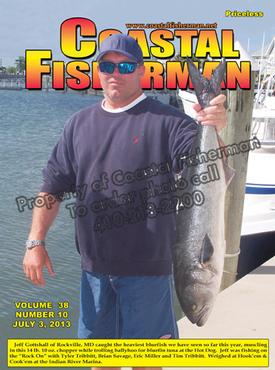


Article by Capt. Mark Sampson
 Finding fish in a given area is a two-part challenge of not only determining “where” they will likely be but also “when” they will be there. Figuring out those two variables can be particularly challenging to folks who are new to an area because between water temperatures, water quality, available food, other predators, salinity levels and so many other factors, there’s a lot that comes to play that puts a fish in a given location at a given time.
Finding fish in a given area is a two-part challenge of not only determining “where” they will likely be but also “when” they will be there. Figuring out those two variables can be particularly challenging to folks who are new to an area because between water temperatures, water quality, available food, other predators, salinity levels and so many other factors, there’s a lot that comes to play that puts a fish in a given location at a given time.
Naturally, one of the best ways to get such fishing info really quick is to have an experienced fishing buddy who can relay the latest updates on when and where everything is biting. Many fishermen will choose to hire a guide or go out on a charter boat to get a quick schooling of how to fish an area. Another great source are local tackle shops, many of which are staffed by personnel who take pride in being able to direct their customers to where the best fishing is. But sometimes such resources are not available to fishermen and they pretty much have to figure out on the their own when and where they need to go in a given area to catch a fish.
Learning about the fish is the best way to become proficient at catching them. If you know that tuna, rockfish, bluefish, flounder, marlin and so forth are taken in the area you can read-up about these species and find out what they like in the way of food, bottom structure, water temperatures and depths. By putting these factors together one should be able to deduce at least an idea of what kind of surroundings a particular species would favor, such as the deep open water that’s home to billfish, high relief bottom structure enjoyed by tautog or the sloping edges of shoals where flounder like to ambush their prey. Low tide is always a great time to explore new fishing locations in the back bays and along the beach.
With a bit of knowledge about what kind of turf certain fish prefer, anglers can then resort to charts, their own reconnaissance or even Google Earth to study the waters of their local area and locate likely places where their quarry might be found. Of course, the “right time” and “right place” have to be in synch. A location might be perfect for catching a particular type of fish, but if the timing is wrong it’s a wasted effort. Triggerfish are all over our offshore wrecks in mid-summer, but go out there in the winter and you’d have a better chance of landing a white whale. Triggers just don’t like cold water!
Once all the studying and scouting is done, it’s time for anglers to get out on the water and see what they can catch. And that’s when the learning experience can really begin because nothing beats the education an angler can get from actually being out there trying to pluck a fish from the water. Learning the characteristics of the currents in different locations, observing schools of baitfish, seeing where seabirds are feeding and other fishermen are fishing all mesh to help to inform observant anglers whether or not they are in the right place.
Although some would also conclude that catching, or not catching, fish is the best indicator of finding a good spot, one-time success or failure only indicates what was going on at that one particular time. It could be the hottest fishing spot on Delmarva but at that moment the tide may have been wrong, the water too cloudy, the bait was not there or a bunch of jet-skiers might have just passed through and spooked everything away. There are too many variables that dictate why a fish may or may not be at a particular location to write it off after just one or two failed attempts. If a place looks “fishy” it probably will be under the right conditions, so give it time!
Knowledge and a lot of patience allows anglers to fish “smart tactics” rather than simply dropping a hunk of bait in the water and hoping for a bite.
Captain Mark Sampson is an outdoor writer and captain of the charter boat “Fish Finder”, docked at the Ocean City Fishing Center.